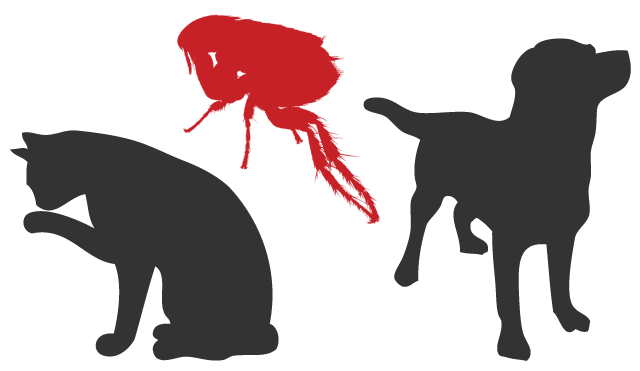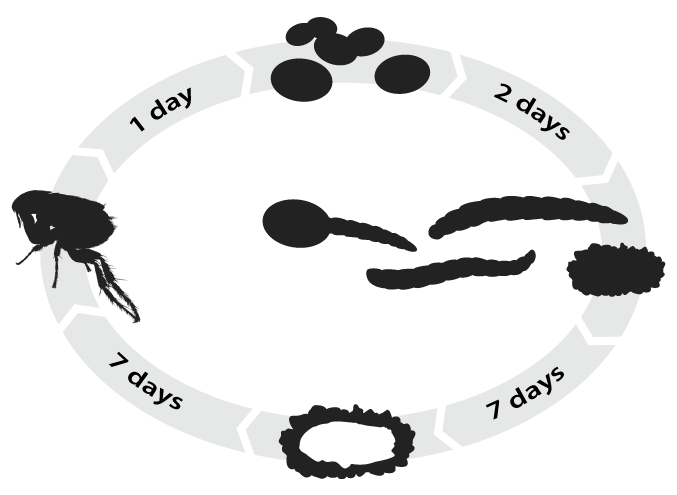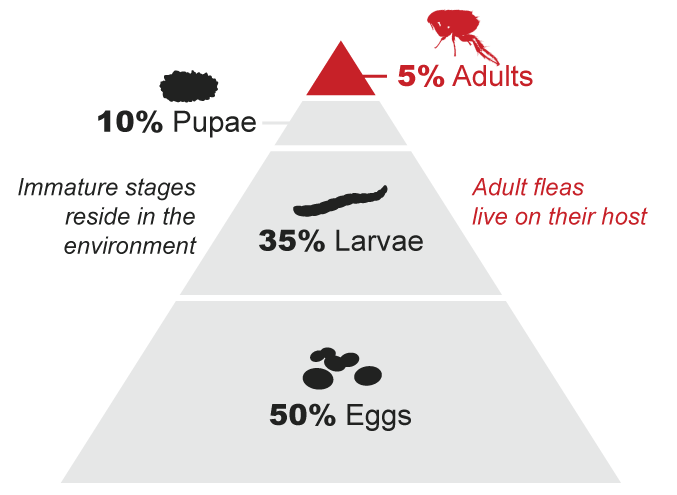
Siphonaptera: Pulicidae
Ctenocephalides felis felis


Flea Life Cycle
Cat fleas are holometabolic insects. They transition through four distinct phases—egg, larva, pupa, and adult. How quickly fleas develop depends upon temperature and humidity. In homes, the life cycle completes in 17 to 26 days. In ideal conditions, it can complete in 12 days.
The average female lays 25 eggs a day, and lives for seven days. Within a month she’ll have thousands of descendants, though most won’t survive to reach adulthood.

Population Dynamics
Finding fleas on a pet is only seeing the ‘tip of the iceberg’. For every adult flea, there are around 100 unseen in immature stages. Infestations consist of 50-57% eggs, 34-35% larvae, 8-10% pupae, and 1-5% adults.
Adult fleas live on animals and rarely leave. Pre-adult stages live in the environment. Eggs are laid on the host but soon fall off. Most end up in carpeted rooms where pets frequently rest. In homes, 83% of larvae live deep within carpets. There, the unseen fleas develop into adults.